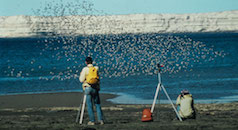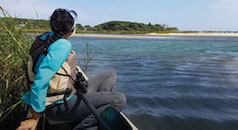Researchers believe that climate change will cause 44 percent of Maine’s landscape to change to a different kind of habitat over the next hundred years, the highest percentage of any state.
A new report – available online today – provides sharper detail on which habitats will be heavily impacted by climate change and what stressors they will face. “Climate Change and Biodiversity in Maine: A Climate Change Exposure Summary for Species and Key Habitats” was a collaboration between Manomet, The Nature Conservancy, the Maine Department of Inland Fisheries and Wildlife, Maine Audubon Society, the Maine Natural Areas Program and the U.S. Fish and Wildlife Service.
For coastal and estuarine habitats, three out of five habitat types were rated as having a “High” estimate of climate change exposure. The report identified Marine Open Water, Unconsolidated Shore (beaches & mudflats) and Estuarine Emergent Salt Marsh as the habitats likely to bear the brunt of climate change impacts. The stressors for these habitats were sea level rise, sea temperature increase and ocean acidification.
For freshwater wetland habitats, three out of the six habitats received a “High” estimate of climate change exposure. Rivers & Streams, Freshwater Lakes & Ponds and Peatlands were the areas that are predicted to suffer a heavy impact. The stressors for these habitats were water temperature increase, drought, and a peak of high-water levels shifting from spring to winter.
For upland habitats, only two of the 10 habitats were rated as having a “High” estimate of climate change exposure. Mountaintop Forest and Alpine habitat were likely to suffer a heavy impact. The climate change stressors for Mountaintop Forest were temperature increase, drought and pest impacts. The stressors listed for Alpine habitat were temperature increase and CO2 fertilization.
“Increasing climate change knowledge among Maine’s conservation biologists is an essential first step if they are to select and deploy new conservation strategies,” according to the report. “The results of this assessment can be further used to prioritize and direct adaptive conservation measures.”
Click here to view the “Climate Change and Biodiversity in Maine: A Climate Change Exposure Summary for Species and Key Habitats” report.
– Dave McGlinchey





 Back to all
Back to all